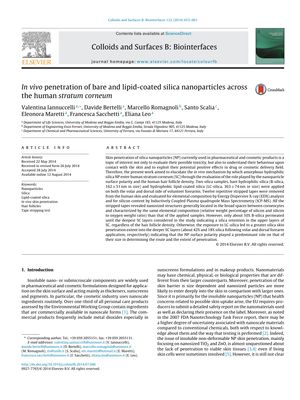In Vivo Penetration of Bare and Lipid-Coated Silica Nanoparticles Across the Human Stratum Corneum
August 2014
in “
Colloids and surfaces. B, Biointerfaces
”
silica nanoparticles stratum corneum bare hydrophilic silica hydrophobic lipid-coated silica tape stripping Energy Dispersive X-ray analysis Inductively Coupled Plasma quadrupole Mass Spectrometry skin penetration hair follicle density transfollicular route silica NPs SC B-silica LC-silica EDX analysis ICP-MS

TLDR Lipid-coated silica nanoparticles penetrate human skin more deeply than bare silica nanoparticles.
The study examined the penetration of two types of silica nanoparticles (NPs) through the human stratum corneum (SC): bare hydrophilic silica (B-silica) and hydrophobic lipid-coated silica (LC-silica). It involved 5 healthy Caucasian volunteers (3 female and 2 male, aged 20-62). The NPs were applied to the forearms and analyzed using tape stripping, Energy Dispersive X-ray (EDX) analysis, and Inductively Coupled Plasma quadrupole Mass Spectrometry (ICP-MS). The study found that only about 10% of B-silica penetrated the deepest SC layers, while LC-silica showed greater penetration (about 42% on the volar forearm and 18% on the dorsal forearm). The results indicated that NP surface polarity significantly affects skin penetration more than size, with hydrophobic LC-silica penetrating deeper into the SC. The study concluded that the hydrophilic character of silica NPs causes retention in the superficial SC layers, and hair follicle density does not significantly affect penetration, suggesting that the transfollicular route is not a major pathway for NP penetration within the examined size range.





